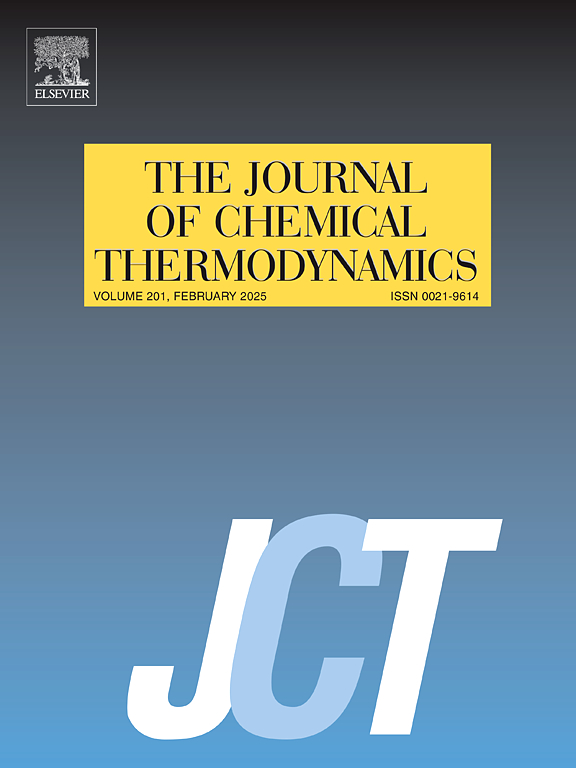苯甲酸钾在纯溶剂中的溶解度和溶解热力学性质
IF 2.2
3区 工程技术
Q3 CHEMISTRY, PHYSICAL
引用次数: 0
摘要
本研究采用静态法研究了苯甲酸钾在甲醇、乙醇、正丙醇、异丙醇、正丁醇、异丁醇、正戊醇、甲酰胺、N,N-二甲基甲酰胺和N,N-二甲基乙酰胺等10种纯溶剂中的溶解度,温度范围为282.95 ~ 317.95 K,常压下。分析了温度和溶剂类型对苯甲酸钾溶解度的影响。实验结果表明,苯甲酸钾在溶剂中的溶解度随温度的升高而增大。并用修正的Apelblat方程和λh方程拟合了苯甲酸钾的溶解度实验数据。计算结果表明,修正后的Apelblat方程比λh方程具有更好的计算结果。利用Hansen溶解度参数和偶极矩分析了苯甲酸钾在不同溶剂中的增溶行为。最后,根据实验溶解度数据和范霍夫方程计算了苯甲酸钾的溶解热力学性质,包括吉布斯自由能、焓和熵。本文章由计算机程序翻译,如有差异,请以英文原文为准。
Solubility and dissolution thermodynamic properties of potassium benzoate in pure solvents
In this study, the static method was employed to investigate the solubility of potassium benzoate in ten pure solvents, including methanol, ethanol, n-propanol, isopropanol, n-butanol, isobutanol, n-pentanol, formamide, N,N-dimethylformamide, and N,N-dimethylacetamide, within the temperature range from 282.95 to 317.95 K at atmospheric pressure. The influence of temperature and solvent type on the solubility of potassium benzoate was analyzed. The experimental results revealed that the solubility of potassium benzoate increased with the rising of temperature in all the solvents studied. In addition, the experimental solubility data of potassium benzoate was fitted using the modified Apelblat equation and the λh equation. The calculated data showed that the modified Apelblat equation gave the better results compared to the λh equation. Furthermore, the Hansen solubility parameters and dipole moments were used to elucidate the solubilization behavior of potassium benzoate in various solvents. Finally, the dissolution thermodynamic properties of potassium benzoate including the Gibbs free energy, enthalpy and entropy were calculated based on the experimental solubility data and the van't Hoff equation.
求助全文
通过发布文献求助,成功后即可免费获取论文全文。
去求助
来源期刊

Journal of Chemical Thermodynamics
工程技术-热力学
CiteScore
5.60
自引率
15.40%
发文量
199
审稿时长
79 days
期刊介绍:
The Journal of Chemical Thermodynamics exists primarily for dissemination of significant new knowledge in experimental equilibrium thermodynamics and transport properties of chemical systems. The defining attributes of The Journal are the quality and relevance of the papers published.
The Journal publishes work relating to gases, liquids, solids, polymers, mixtures, solutions and interfaces. Studies on systems with variability, such as biological or bio-based materials, gas hydrates, among others, will also be considered provided these are well characterized and reproducible where possible. Experimental methods should be described in sufficient detail to allow critical assessment of the accuracy claimed.
Authors are encouraged to provide physical or chemical interpretations of the results. Articles can contain modelling sections providing representations of data or molecular insights into the properties or transformations studied. Theoretical papers on chemical thermodynamics using molecular theory or modelling are also considered.
The Journal welcomes review articles in the field of chemical thermodynamics but prospective authors should first consult one of the Editors concerning the suitability of the proposed review.
Contributions of a routine nature or reporting on uncharacterised materials are not accepted.
 求助内容:
求助内容: 应助结果提醒方式:
应助结果提醒方式:


